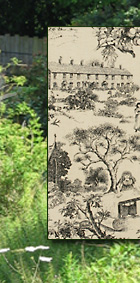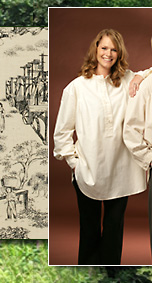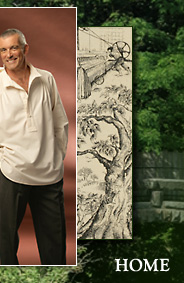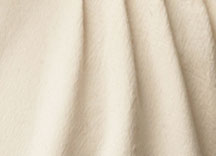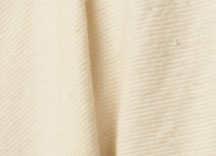![]()
Natural Victorian
Cotton Products

Victorian Era Cotton Novelty Fabric by Woven By Water®
We have chosen the three fabrics that are made at Quarry Bank Mill as our basic fabrics.
Woven By Water® Authentic Victorian Cotton Fabric - Plain Weave |
|
Original Woven by Water Plain Weave $11.00/yard |
|
Woven By Water® Authentic Victorian Cotton Fabric - Twill |
|
Woven by Water Cotton Twill Fabric $12.80/yard |
|
This is True Victorian Cotton Fabric.
Spun on the same Mule-Spinners,
Woven on the same Water Powered Looms.
Perfect for Re-enactments or Re-creations of Victorian Era Garments and Costumes. There is no other Cotton Fabric in the world, for sale, in yardage, that can make this claim.
This is the correct Ends-Per-Inch and Picks-Per-Inch to satisfy even the most discerning historically correct garment-maker.
History of Cotton in Victorian Times
In Victorian Times, Cotton revolutionized the way people lived. The growth of women's employment outside the home created a need for more readily washable clothing and linens. Cotton was the catalyst. Because it was relatively inexpensive and easy to care for, it made frequent changes of clothing standard for all but the poorest in society. Without Cotton, some of the extravagances of the Victorian Era would have been impractical. In the 1850s full skirts were supported by as many as six or seven petticoats. Cotton influenced fashion and helped establish "whites" as de rigueur of the tennis courts, the cricket pitch, as well as in the nursery.
Fashion changed over the century, for example the wearing of knickers and shirtwaists grew more common, but the use of washable fabrics became a permanent presence in everyday life.
The East India Company imported cotton into England in the seventeenth century, and it sold in spite of the bitter opposition of the wool manufacturers, which at times was strong enough to have the use of cotton cloth prohibited by law. It was in Manchester that cotton manufacturing finally became accepted in England. This is the home of Quarry Bank Mill.


